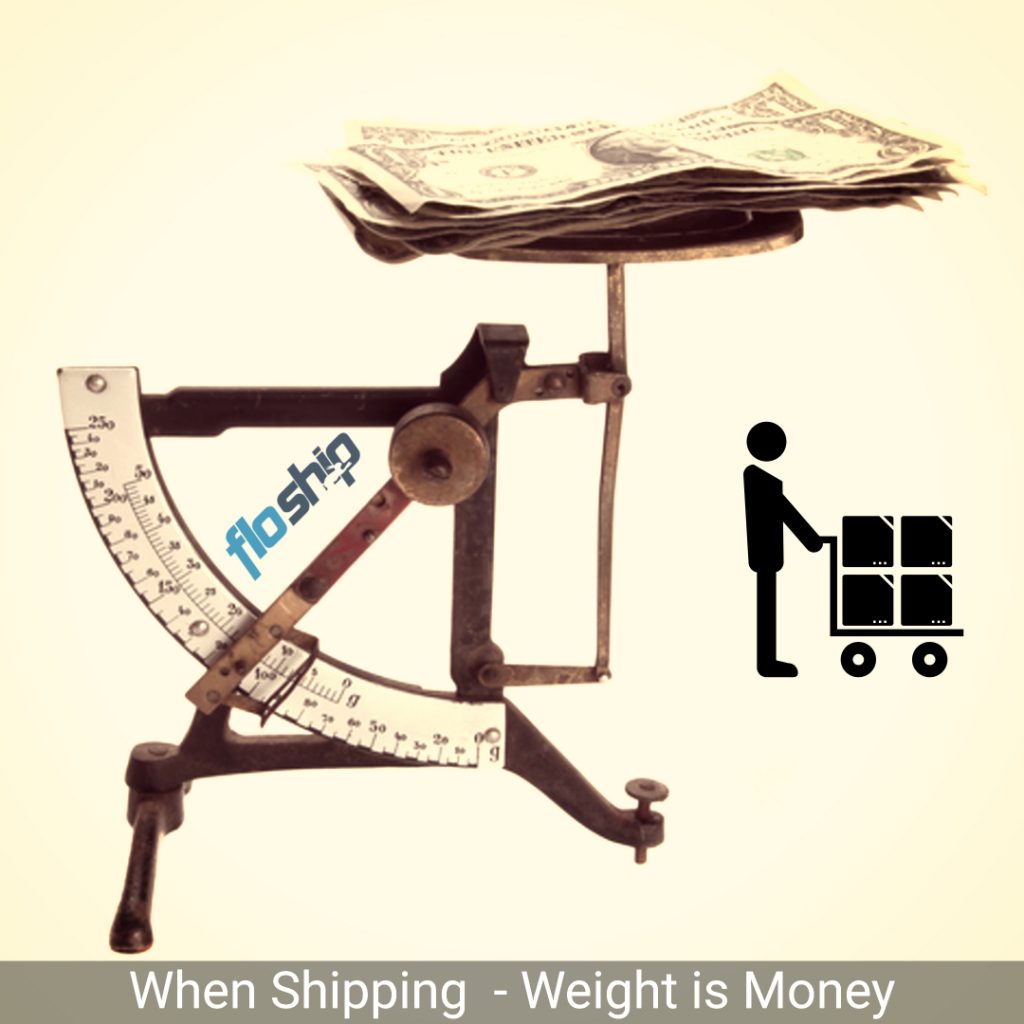When you are sending packages across the US or ordering from any ecommerce site anywhere the world, the cost to do so will be decided by the weight of your package.
There are two calculations for working out the billable weight of your shipment:
- the dimensional weight, and,
- the actual weight.
It is the greater of these two weights that will be used.
How To Determine The Actual Weight
The actual weight of your package is rounded up to the next whole pound.
So if you have a package that is 13.1 lbs, then it would be counted as 14 lbs. Include any packaging for the item, for example, bubble wrap or foam.
It is best if you use a scale to determine the weight of the package as this is the measuring device that a shipper will use.
If you are using UPS Express Envelopes, you don’t have to round up to the nearest pound if the package weighs less than eight ounces.

How To Determine The Dimensional Weight
Dimensional weight is a little harder to determine.
It refers to the package density, the amount of space a package can occupy compared to its actual weight. The dimensional weight of a package applies to all domestic and international packaging services.
Firstly, you need to use inches in the U.S.A.
Measure the package at its longest, widest and tallest point, even if they aren’t all at the same end.
Each of these needs to be rounded up to the nearest whole number.
For example, anything less than half an inch is rounded down and anything that is a half or over is rounded up.
These three figures are then multiplied together to obtain the cubic size of the package in inches.
Then there are two ways to calculate the next step:
For domestic shipments you need to divide the cubic size by 166. Any fraction needs to be increased to the nearest whole number. When you are shipping from Canada using the UPS Standard from Canada, then you should also use this figure.
For international shipments, you take the same cubic size and divide it by 139. Again you need to increase any fraction to the nearest whole number.
For example, if you have a package that is 20 inches by 10 inches by 10 inches at its greatest points. The cubic size would be:
20 X 10 X 10 = 2000
Recommended for You
Then 2000 / 166 = 12.05
2000 / 139 = 14.38
For domestic shipments and Canada Standard, the dimensional weight will be 12.05 and this would be rounded up to 13.
For international shipments the dimensional weight would be 14.38 and this would need to be rounded up to 15.
To Calculate Your Billable Weight
Next, you can start to look at your billable weight.
This is where you compare the package’s actual weight against the dimensional weight. The greater value of these two is counted as the billable weight.
This can now be used to determine the rate that will be applicable to your package.
When you are shipping multiple packages, you should total the billable weights before looking at your rates.
Large Packages
When you are shipping large packages there are a couple of things to consider.
Firstly, a Large Package Surcharge can be applied to domestic and international shipments.
To know whether your package is considered to be ‘large’ calculate the length plus girth.
The girth is equal to twice the width plus twice the height of the package. If these two figures added together exceed 130 inches then you have a large package.
For example, if you have a package that is 40 inches long by 20 inches wide and 30 inches high, then the calculation would be as follows:
40 + (20 x 2) + (30 x 2) = 40 + 40 + 60 = 140 inches.
Hence our example package is liable for the Large Package Surcharge.

Large packages are billed at a minimum of 90 pounds.
An additional handling charge is not applied when a large package surcharge is applied.
- Have you calculated your billable weight yet?
- What does it tell you about your packaging and postage prices?
